During the First World War, a group of Indian scholars and freedom fighters led by the head lecturer at Dar al-‘Ulum Deoband, Shaykh al-Hind Mawlana Mahmud Hasan was interned by the Allies on the island of Malta in the Mediterranean for anti-colonial activities. Their story is one of dedication, struggle and endurance, something that has captivated the imagination of many generations of people from the Sub-Continent. [1]I dedicate this paper to my late father, Haji Mohammed Ismail Nakhuda (d. 2016) who I remember in my childhood often telling me the story of Shaykh al-Hind and Hadrat Madani, something that captivated my attention at a young age. As a result, modern Muslim globetrotters visiting Malta often comment that there is little information about where these Indian freedom fighters were exactly incarcerated from February 1917 until their release in 1920. This paper briefly discusses where I feel they were interned and the reason why I have come to this conclusion.
The island of Malta in the Mediterranean became a part of the British Empire in 1814 and remained so until its independence in 1964. The island was used as a shipping way-station and fleet headquarters by Britain, and was particularly important following the opening of the Suez Canal in 1869. It was considered an important stop on the way to India from the UK and during the First World War became known as the Nurse of the Mediterranean due to the large number of wounded Allied soldiers housed there. The island’s capital, Valletta was also the location of the Royal Navy’s Mediterranean Fleet’s headquarters prior to the Second World War. This command was subsequently moved to Alexandria, Egypt in 1937.
Just over a kilometre from Valletta Harbour is Fort Verdala (also known as Verdala Barracks)[2] During a recent visit to Malta, a group of UK and Indian scholars visited the Verdala International School thinking this was where Fort Verdala was located. This school is actually some 12 km from Fort Verdala at Fort Pembroke and not where Shaykh al-Hind was incarcerated. that the British built in the 1850s and used to house British military until 1977. During both the First and Second World Wars, Fort Verdala was used as a Prisoner of War (POW) internment camp. Verdala also had a section known as St Clement’s Retrenchment.[3]See https://en.wikipedia.org/wiki/Fort_Verdala and https://smcsecondary.com/premises/the-verdala-story/ During World War One, POWs were kept in several camps in Malta located a short distance from Valletta Harbour where the Royal Navy’s Mediterranean Fleet was headquartered. These POW camps were Verdala Barracks, Salvatore Fort and Polverista Barracks.[4]https://timesofmalta.com/articles/view/Love-blossomed-for-clerk-in-a-Maltese-POW-camp.543521 and http://www.independent.com.mt/articles/2012-04-01/news/prisoners-of-war-in-malta-in-the-first-world-war-307997/
There are several books that mention Shaykh al-Hind, Shaykh al-Islam Mawlana Husain Ahmad Madani, the Silk Handkerchief Movement and their incarceration in Malta: Naqsh-i-Hayat, Asiran-i-Malta, Tahrik-i-Reyshmi Rumal, Husain Ahmad Madani – The Jihad for Islam and India’s Freedom by Barbara D. Metcalf, and Maulana Husain Ahmad Madni – A Biographical Study by D.R. Goyal. All of these books are excellent resources in understanding the contribution of Muslim Indian scholars in the independence struggle. While they all mention that these Indian freedom fighters were in Malta during First World War, they do not specify where they were exactly interned.
Probably the most detailed book on our elder’s time in Malta is in Shaykh al-Islam’s Safarnama Asir-i-Malta. There are several reasons why I believe that the scholars were interned at Fort Verdala. In his travelogue, Hadrat Madani mentions that on arrival at a Maltese port on 21 February 1917, Shaykh al-Hind was transported to the internment camp by vehicle whereas Hadrat Madani and the rest of the group were marched to the ‘camp’. Being an island, there would most likely be several ports on Malta and it would only make sense for the Allies to have brought POWs to its military port which was located at Valletta Harbour. It would also be assumed that with so many POWs in transit, the place of their internment should be close to Valletta Harbour. On arrival, Shaykh al-Hind was transported in a vehicle due to old age while his companions were marched to their place of interment, something that tells us that the POW camp must have been in walking distance from Valletta Harbour. Fort Verdala is around 1.2 km from the port.
In his travelogue, Hadrat Madani does not mention Fort Verdala per se. Instead, he describes the place of their incarceration as a large castle or fort (qila‘) consisting of fortified walls, moats, trenches, open spaces and many buildings. He also mentions that this fort was built for soldiers and was used as a POW camp during the war. Fort Verdala fits this description, having initially been built in the 1850s as a military barracks. He also mentions that the castle was sectioned into different areas using barbed wire with each area given a different name e.g. Rogate Camp (unsure if the transliteration is correct), St Clement’s Camp (also known as the German Camp), the Bulgarian Camp, the Rome Camp, Saint Clement’s Barracks (also known as the Arab Camp), Verdala Barracks, Dalfarasta (possibly Polverista) and New Verdala. Note the use of the word Verdala in the above. We also know that, according to the biography of an Ottoman special agent called Eşref Bey who was interned at Verdala Fort there was a St Clement’s Camp at Verdala (more information on Eşref below).
Hadrat Madani mentions that their group was initially housed in the Rogate Camp and then in September or October of 1917 shifted to the Arab Camp. The Rogate Camp is described as a tent city situated in the fort’s ditch or moat and was close to the main gate of the fort. This camp was also used to house low ranking POWs and military officers. The Arab Camp (St Clement’s Barracks), on the other hand, was a solid building used to house higher ranking POWs. With POWs being of multi-ethnicities and adherents of an array of religions, internees were housed according to nationality or faith. Muslim prisoners (military and civilian) were housed in the Rogate and Arab Camps.
He also mentions that Verdala Barracks was a two storey building and describes it as excellent and full of good facilities. A large portion of it was dedicated to high ranking officers and high ranking civilians. Dalfarasta (possibly Polverista?) was a three storey building situated outside the boundary of the fort. Its rooms were of a better standard than those in Verdala.
According to Hadrat Madani, there were some 3,000 prisoners in the entire fort, the majority of whom were German. He also mentions that the fort was outside of the city and that the prisoners were, for recreation purposes, not allowed into the city. Prisoners would, however, go swimming and on excursions while under guard. In around September or October of 1917, Shaykh al-Hind’s group was moved from the Rogate Camp to the Arab Camp (also known as St Clement’s Barracks).
Hadrat Madani also mentions in detail the Ottoman Military Cemetery in Marsa and provides a diagram of its layout. It was here that Hadrat Madani washed and shrouded a fellow Ottoman prisoner who was executed for murder and then subsequently buried. Shaykh al-Hind and his companions would also often visit the grave of this soldier whenever they visited the cemetery. This cemetery is around 4 km from Fort Verdala and due to the scholars’ visits to this location leads one to believe that our elders were most likely at Fort Verdala. When one of Shaykh al-Hind’s group, Hakim Nusrat Husain, passed away on 9 Dhu al-Qa’da 1336 (circa 16 August 1918), he was also buried at this cemetery.
Perhaps the most conclusive proof that Shaykh al-Hind and his group were at Fort Verdala lies in the biography of an Ottoman special agent called Colonel Eşref Bey (Ashraf Bey also known as Eşref Kuşçubaşı) (1873-1964) by Benjamin C. Fortna, The Circassian – A life of Eşref Bey, Late Ottoman Insurgent and Special Agent.
Having been given access to Eşref’s personal papers by his descendants, Fortna’s account in English is perhaps one of the most detailed on an individual often described as the ‘Turkish Lawrence of Arabia.’ Fortna writes that Eşref arrived at Valletta Harbour, Malta on 18 April 1917 from Alexandria, Egypt. The route of his journey to Malta seems to be similar to that of Shaykh al-Hind and his companions. He had been taken captive in the Hijaz (at the Turkish Battle at Khaybar) in around April 1917, taken to Jeddah via Rabigh, then on to the Suez Canal, Cairo, Alexandria and then finally Malta. In Malta he was interned at Fort Verdala which, according to Fortna, had been turned into a POW camp and incorporated “the Verdala Barracks and the ramparts of the St Clement Retrenchment.” Eşref was housed in Verdala Barracks and as a high-ranking military figure his stay was made comfortable and his captors afforded him proper protocol. He was also considered the head of the Ottomans at Verdala and was given a summerhouse in Saint Clement’s Camp where Shaykh al-Hind and his group were kept. The biography does not provide much detail on Eşref’s interactions with any Indians. It does, however, mention that “sometimes he [Eşref] would converse with a religious figure named Mevlana Mahmud Huseyni,” which is probably in reference to Shaykh al-Hind.
These interactions with Shaykh al-Hind must have been more than significant. In the epilogue (tatimma) of Safarnama Asir-i-Malta, Hadrat Madani mentions that Eşref was interned at the same place where they were kept. He also provides a glowing account of him, his exploits and how he developed a close relationship with Shaykh al-Hind. Looking at the account, it would seem that the Indian scholars spent considerable time with Eşref Bey, discussing religion, politics, Eşref’s background, family and exploits, and the Ottoman Empire, etc. When Hakim Nusrat Husain passed away, Eşref paid for the transport costs of around 50 POWs who travelled from their place of internment to the Ottoman Military Cemetery to participate in the funeral. This payment amounted to several pounds and was paid without Shaykh al-Hind and his group knowing until after the funeral, something that deeply touched the scholars. Eşref also paid for a headstone on Hakim Nusrat’s grave that was inscribed with words in Arabic as suggested by Shaykh al-Hind. It would, therefore, make sense that Shaykh al-Hind was most likely, similar to Eşref Bey, interned at Fort Verdala having arrived at Valletta Harbour.
Timeline of the Prisoners of Malta
- 24 Safar 1335 (circa 20 December 1916): Enter British custody in Jeddah having been arrested by the Sharif in Makkah (Naqsh-i-Hayat)
- 18 Rabi al-Awwal 1335 (circa 12 January 1917): Leave Jeddah for Suez by ship (Naqsh-i-Hayat)
- 22 Rabi al-Awwal 1335 (circa 16 January 1917): Arrive in Suez, sent by train to Cairo, imprisoned in Giza jail (Naqsh-i-Hayat)
- 23 Rabi al-Thani 1335 (15 February 1917): Given passports and ordered to be sent to Malta (Asiran-i-Malta and Safarnama Asir-i-Malta)
- 24 Rabi al-Thani (16 February 1917): Travel to Alexandria from Cairo by train. Ship sails for Malta same day
- 29 Rabi al-Thani 1335 (21 February 1917): Arrive in Malta (Naqsh-i-Hayat and Asiran-i-Malta)
- September or October 1917: Move from Rogate Camp to the Arab Camp (Asiran-i-Malta)
- 2 Jumada al-Thani 1338 (circa 22 February 1920): Leave Malta after approximately 3 years (Naqsh-i-Hayat)
- 25 Jumada al-Thani 1338 (15 March 1920): Reach Alexandria and kept in prison (Naqsh-i-Hayat)
- 13 Rajab 1338 (2 April 1920): Sent to Suez and kept in a prison camp (Naqsh-i-Hayat)
- 5 Ramadan 1338 (23 May 1920): Embark on a steamer for India (Naqsh-i-Hayat)
- 12 Ramadan 1338 (circa 30 May 1920): Reach Aden (Naqsh-i-Hayat)
- 20 Ramadan 1338 (8 June 1920): Reach Bombay (Naqsh-i-Hayat)
Views expressed by our writers are their own and do not necessarily reflect Basair.net’s stance.
References
| 1 | I dedicate this paper to my late father, Haji Mohammed Ismail Nakhuda (d. 2016) who I remember in my childhood often telling me the story of Shaykh al-Hind and Hadrat Madani, something that captivated my attention at a young age. |
|---|---|
| 2 | During a recent visit to Malta, a group of UK and Indian scholars visited the Verdala International School thinking this was where Fort Verdala was located. This school is actually some 12 km from Fort Verdala at Fort Pembroke and not where Shaykh al-Hind was incarcerated. |
| 3 | See https://en.wikipedia.org/wiki/Fort_Verdala and https://smcsecondary.com/premises/the-verdala-story/ |
| 4 | https://timesofmalta.com/articles/view/Love-blossomed-for-clerk-in-a-Maltese-POW-camp.543521 and http://www.independent.com.mt/articles/2012-04-01/news/prisoners-of-war-in-malta-in-the-first-world-war-307997/ |


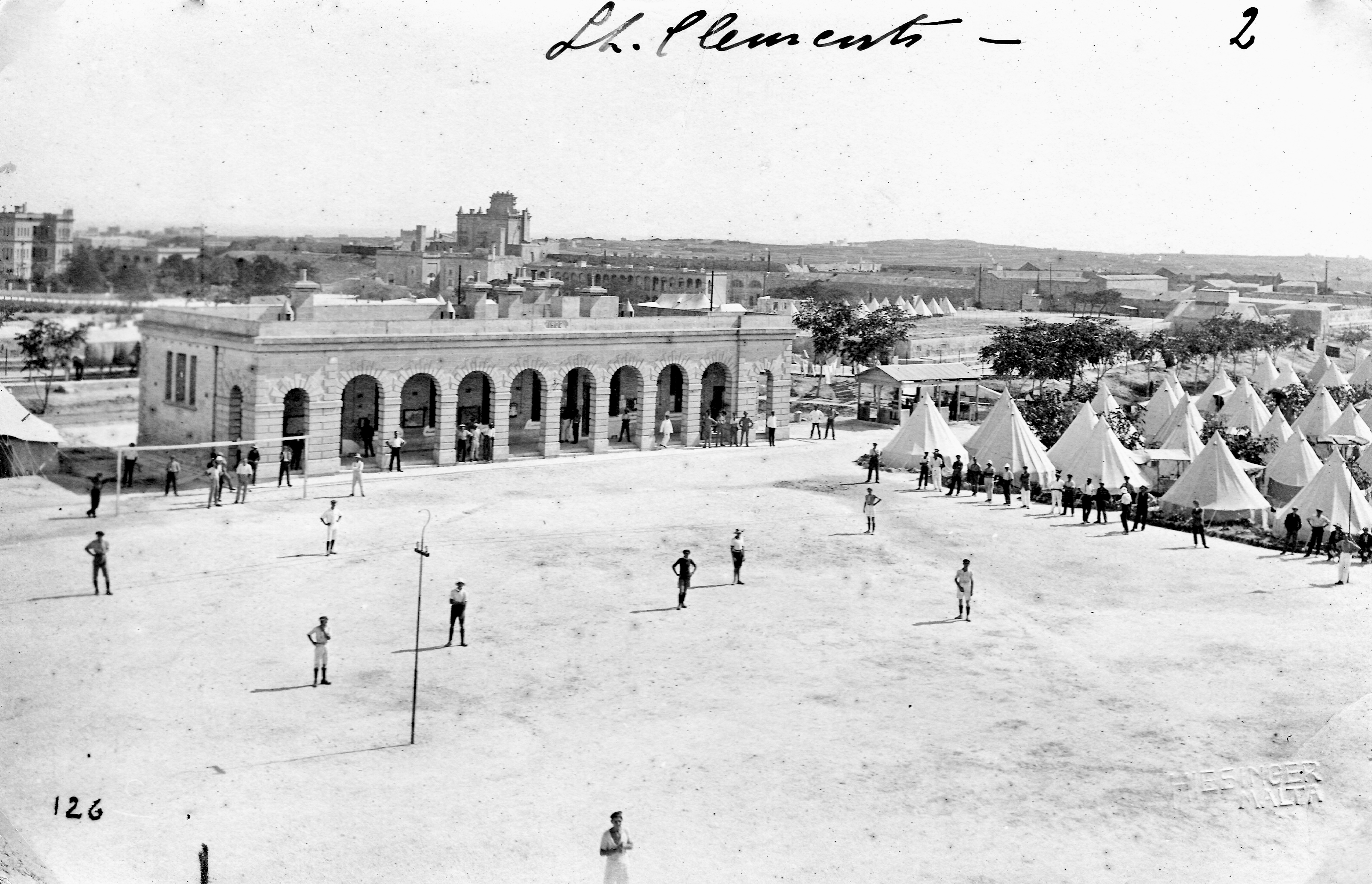
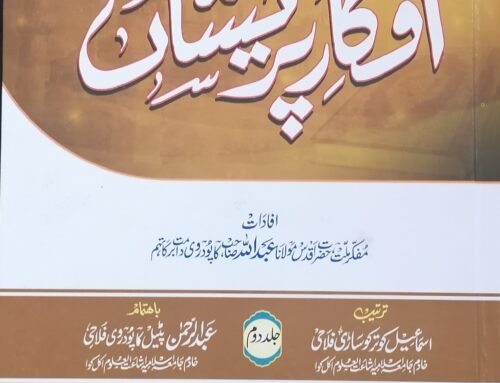
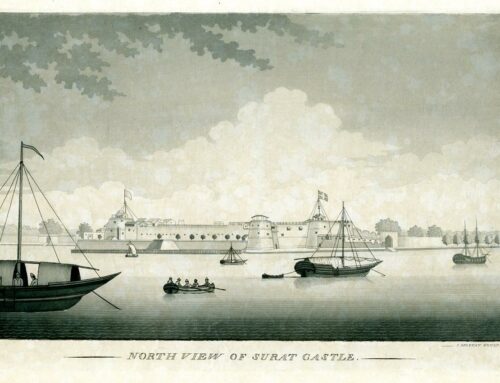
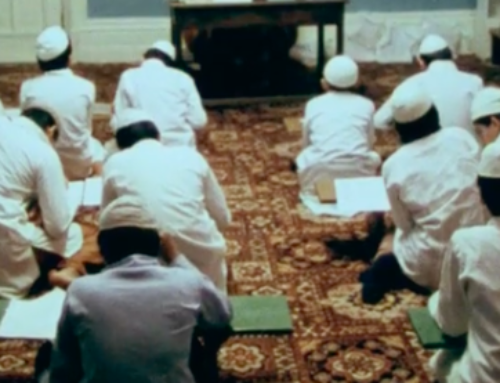
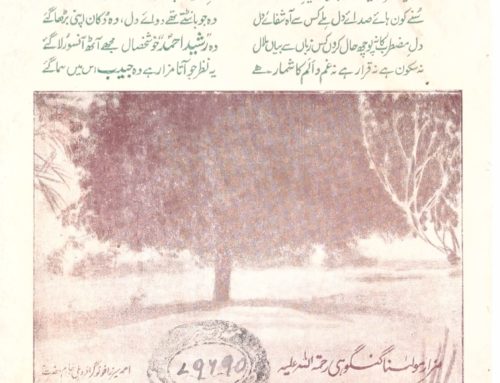

Rogate Camp most probably refers to Rock Gate Camp – another compound adjacent to Fort Verdala.
Hi Mario, thank you for that! Had me completely puzzled for ages. Appreciate you sharing that with us.
I am the great grandson of Maulana Hakim Saiyed Nusrat Hussain, his name is written in Turkish language HINTLI HEKIM SEYIT NUSRET HUSEYIN 1920 On a stone in the Turkish military cemetry in Malta. He belonged to a renowned land lord family in town kora Jahanabad, district fatehpur, Uttar pradesh, India. His mother Hajra Bibi started Nurul Islamia Madarsa in the town for islamic scholars. In the memory of late Maulana Hakim Nusrat Hussain his grandson and my father Syed Qasim Hasan established an inter college and named – Shaheed Malta Inter College.
My name Syed Abid hasan, great grandson of Late – Maulana Hakim Saiyed Nusrat Hussain freedom fighter 1920 he was arrested by Britishers with Sheikh ul hind, during the “silk letter movement” and imprisoned in Malta jail but the only one who died in the jail. That’s why he was called Shaheed e Malta and the rest comorades of Sheikh ul hind were called Aseeran e Malta or prisoner of Malta.
Mashallah, pleased to meet you and thank you for sharing this information!
I am in malta and i am from u.p india can you give your number we can talk on whts app,
I will visit that cemetery soon where our ancestors are .
Hello this is Syed Urfi Raza Zaidi living in Malta ,I m writing a book on Malta and I have written an article about Sheikh ul hind as well , so please contact me on this mail id [email protected]